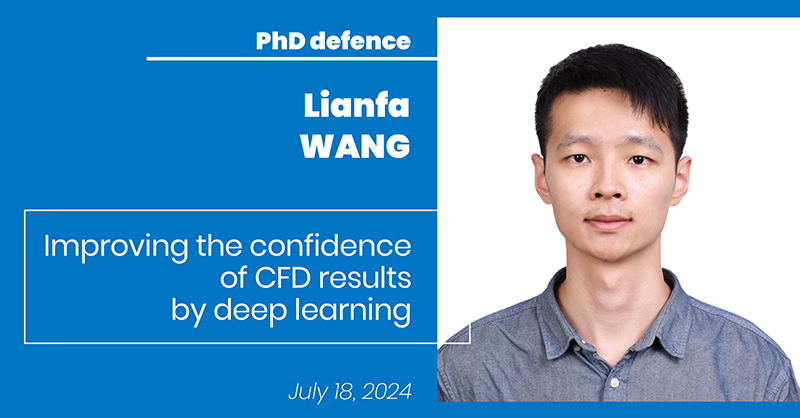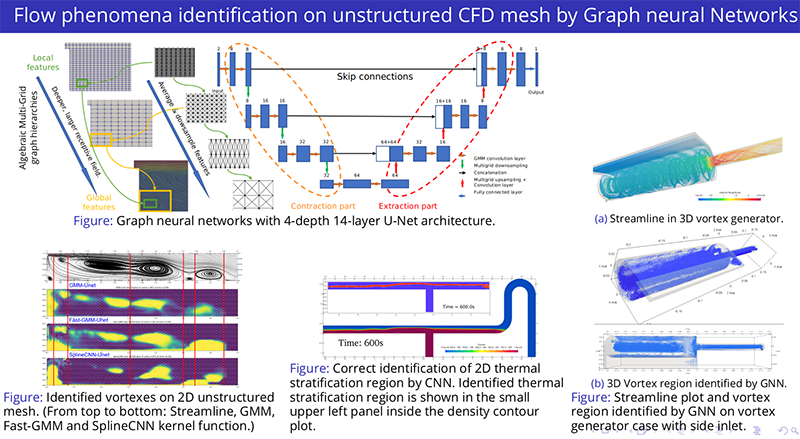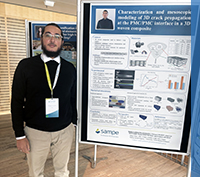PhD defence of Lianfa Wang
Improving the confidence of CFD results by deep learning

Lianfa Wang conducted his PhD work under the supervision of Youssef Mesri. He will defend his PhD in Computational Mathematics, High Performance Computing and Data, on July 18, 2024 in front of the following jury:
M. Fabien CASENAVE Safran Tech | Digital Sciences and Technologies, Rapporteur
M. Guillaume HOUZEAUX Barcelona Supercomputing Center-Centro Nacional de Supercomputación, RapporteurM. Yvan FOURNIER Département MFEE, EDF Lab Chatou, Examinateur
M. Hervé GUILLARD Inria Sophia Antipolis Méditerranée, Examinateur
M. Damien TROMEUR-DERVOUT Claude Bernard University Lyon 1 | UCBL · Institut Camille Jordan, Examinateur
Mme Luisa SILVA RESEARCH INSTITUTE IN CIVIL AND MECHANICAL ENGINEERING (GEM) Centrale Nantes, Examinatrice
M. Charles MOULINEC UK Reasearch and Innovation – Science and Technology Facilities Council, Examinateur
M. Youssef MESRI Cemef Mines Paris-PSL, Examinateur
M. Jean-François WALD Département MFEE, EDF Lab Chatou, Invité
Abstract:
The accuracy of computational fluid dynamics (CFD) simulations of a specific flow phenomenon is highly influenced by the case simulation configuration. In order to help users to better select simulation options and increase trust in obtained results for target flow phenomenon, deep learning algorithms are explored to identify flow phenomena resided on the CFD meshes. Convolutional neural networks (CNN) are employed firstly to identify flow phenomena, such as vortex and thermal stratification, on 2D structured meshes. To overcome the inability of CNN consuming unstructured data, a computational efficient graph neural network (GNN) framework which utilizes U-Net architecture and a successive coarsened graph hierarchy generated from the algebraic multigrid method (AMG) of the open source CFD solver code\_saturne is proposed. After a thorough comparison of the currently available kernel functions in terms of identification accuracy and training efficiency, a fast Gaussian mixture model kernel function is proposed which is better suited for identifying flow phenomena on unstructured CFD meshes. The superiority of the proposed architecture and kernel function is demonstrated by numerical experiments on identifying 2D vortices along with its adaptability to identifying 3D flow features.

A computational efficient graph neural network (GNN) framework which utilizes U-Net architecture and a successive coarsened graph hierarchy generated from the algebraic multigrid method (AMG) of the open source CFD solver code\_saturne is proposed for flow phenomena identification on unstructured CFD meshes
Keywords: Flow phenomena identification, Convolutional neural networks, Graph neural networks, Algebraic multigrid method








